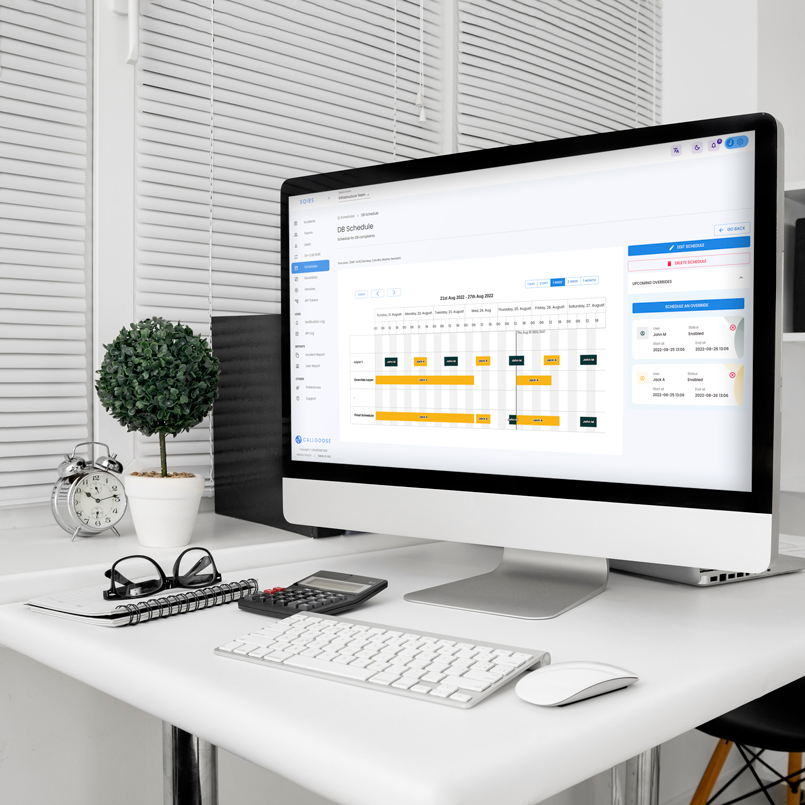Getting Started
Special
SINGLE SIGN-ON
Teams
Users
Escalation Policies
Service
Incident
Request
On-Call Shift
Schedules
Schedule Override
Logs
API
Webhook
Apps Integration
Reports
Preference
Profile
Automation
Self-Service Portal
FAQ
Automation Profile
A Profile in Callgoose SQIBS is used to define the context or environment in which your actions will be executed. Profiles help ensure that specific configurations, such as environment settings or connection parameters, are provided for the actions to run smoothly.
Profile Types
Each profile has a specific type, which determines the environment or configuration needed for executing actions. The currently available profile types include:
- Bash
- Python
- SSH
- Ansible
- Terraform
- Kubernetes
- Powershell
- Runner
Creating a Profile
To create a profile in Callgoose SQIBS, Go to the Profiles section under the Automation category in the dashboard.
Select the Team/Global from the drop-down.
Click on the Add Profile button. You can see a new page. From there do the following.
1. Select Profile Type
Choose the profile type from the list.
2. Enter Required Details
Each profile type has unique configuration requirements. You can view detailed information for each type by clicking the corresponding links below:
- Bash Profile Details
- Python Profile Details
- SSH Profile Details
- Ansible Profie Details
- Terraform Profie Details
- Kubernetes Profile Details
- Powershell Profile Details
- Runner Profile Details
3. Save the Profile
Once you’ve filled in the required information, save the profile. It will then be available for use in workflows and actions that need a specific environment to run.
Edit a Profile
To edit a profile in Callgoose SQIBS, Go to the Profiles section under the Automation category in the dashboard.
Select the Team/Global from the drop-down and locate the specific profile you need to edit.
There are 2 parts for a profile to edit.
- Name/Description edit: Click on the pencil icon at the top right of the Profile card to edit the name and description.
- Details edit: Click on the Show Details button and from the expanded card, click on the Edit button. Based on the type, you can edit whole details.
Delete a Profile
To delete a profile in Callgoose SQIBS, Go to the Profiles section under the Automation category in the dashboard.
Select the Team/Global from the drop-down and locate the specific profile you need to delete.
Click on the Trash icon to delete the profile.
How to add a custom profile
This method applies exclusively to the Deployment Options using the Callgoose SQIBS Runner program.
If you need to integrate custom application automation workflows into the Callgoose SQIBS platform, this feature allows you to do so seamlessly. For example, you can create automation workflows in your preferred programming languages or applications such as Java, JavaScript, Scala, Go, Ruby, Rust, PHP, or any other language and execute them as part of the Callgoose SQIBS automation workflow. (Note: Python has a dedicated profile in Callgoose SQIBS and does not require a custom setup.)
Examples of Use Cases
- Running Java-based applications as part of automation workflows.
- Executing JavaScript, Ruby, or Scala scripts to perform specific tasks.
- Integrating Go or Rust programs into automation processes.
- Running PHP scripts or other custom programs in automated workflows.
Steps to Add a Custom Profile
For Linux, Unix, or macOS:
- Create a bash internal profile under the Runner Profile.
- Inside the bash script, include the necessary commands to invoke your preferred programming languages or applications.
- Ensure the script is executable and correctly references the program or scripts you want to run.
Example Bash Script:
bash #!/bin/bash # Call a Ruby script ruby /path/to/your_script.rb # Call a Rust program cargo run --manifest-path /path/to/your_project/Cargo.toml
For Windows:
- Create a PowerShell Internal profile under Runner Profile.
- Inside the PowerShell script, include commands to call your preferred programming languages or applications.
- Ensure the script correctly references the required programs or scripts.
Example PowerShell Script:
powershell # Call a JavaScript file node "C:\path\to\your_script.js" # Call a Scala program scala "C:\path\to\your_program.scala"
By following these steps, you can run your custom applications or scripts written in Java, JavaScript, Scala, Go, Ruby, Rust, PHP, or other languages as part of Callgoose SQIBS automation workflows. This enables seamless integration of various programming languages and tools into your automation processes.

